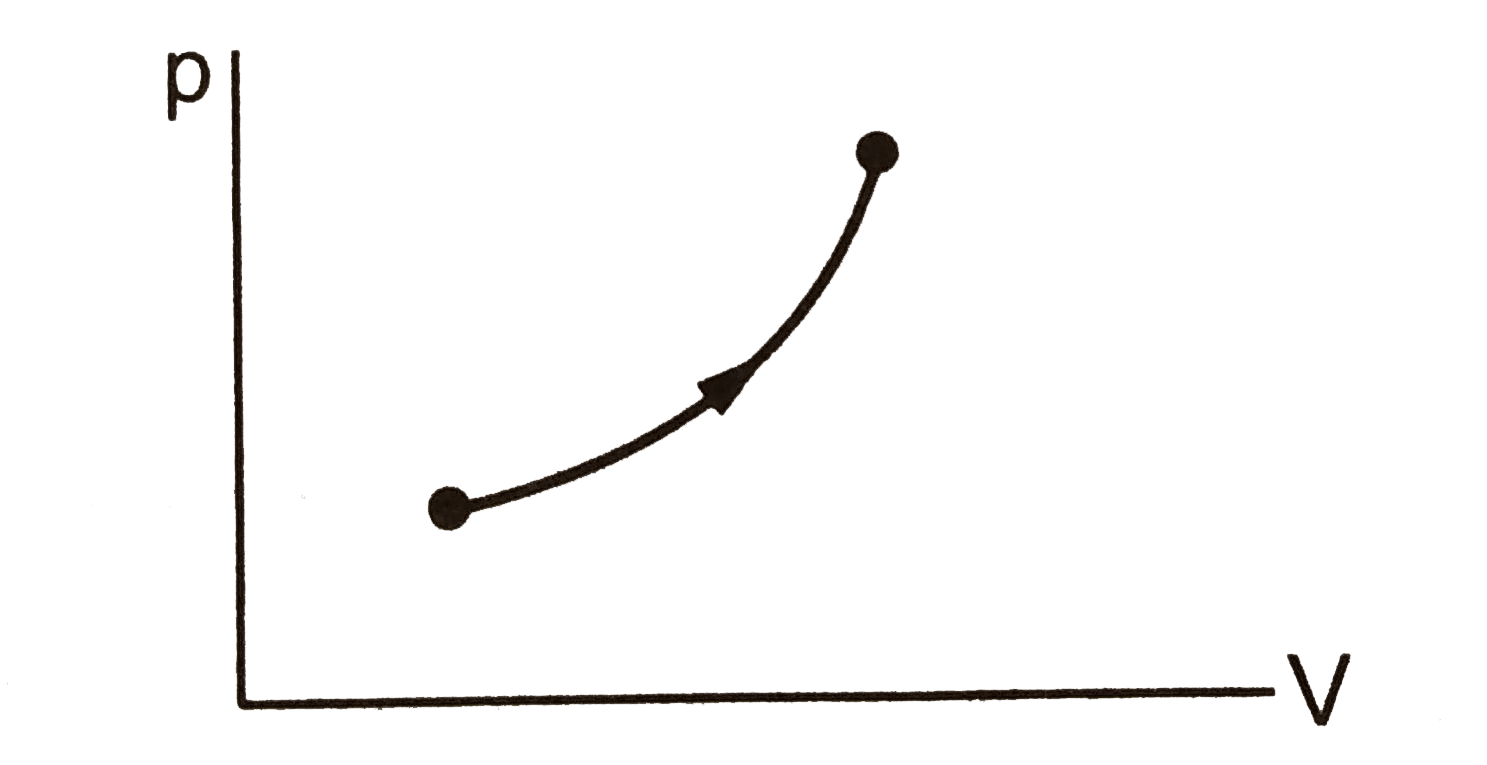For a chemical reaction, is negative .
The heat required to increase temperature of reactants of this reaction by a certain amount and heat required to increase temperature of products of the same reaction by same amount , Relate and
The correct Answer is:
To relate q1 and q2 based on the given information, we can follow these steps:
Step 1: Understand the Definitions
- Heat Capacity (Cp): It is defined as the amount of heat required to raise the temperature of a substance by 1 degree Celsius (or 1 Kelvin).
- Change in Heat Capacity (ΔCp): This is defined as the difference in heat capacities between products and reactants in a chemical reaction.
Step 2: Write the Expression for ΔCp
- According to the problem, we know that:
ΔCp=Cp,products−Cp,reactants
- We can express this in terms of q1 and q2:
ΔCp=q2−q1
Step 3: Analyze the Given Condition
- We are given that ΔCp<0. This means:
q2−q1<0
- Rearranging this inequality gives us:
q2<q1
Step 4: Conclusion
- From the above steps, we can conclude that:
q1>q2
- This means that the heat required to increase the temperature of the reactants (q1) is greater than the heat required to increase the temperature of the products (q2).
Final Relation
Thus, the relationship between q1 and q2 is:
q1>q2
- Heat Capacity (Cp): It is defined as the amount of heat required to raise the temperature of a substance by 1 degree Celsius (or 1 Kelvin).
- Change in Heat Capacity (ΔCp): This is defined as the difference in heat capacities between products and reactants in a chemical reaction.
- According to the problem, we know that:
ΔCp=Cp,products−Cp,reactants
- We can express this in terms of q1 and q2:
ΔCp=q2−q1
- We are given that ΔCp<0. This means:
q2−q1<0
- Rearranging this inequality gives us:
q2<q1
- From the above steps, we can conclude that:
q1>q2
- This means that the heat required to increase the temperature of the reactants (q1) is greater than the heat required to increase the temperature of the products (q2).
Thus, the relationship between q1 and q2 is:
q1>q2
Topper's Solved these Questions
- THERMODYNAMICSBOOK - RESONANCE ENGLISHCHAPTER - THERMODYNAMICSEXERCISE - Exercise-2 Part-1: Only one option correct type
20 Videos
- THERMODYNAMICSBOOK - RESONANCE ENGLISHCHAPTER - THERMODYNAMICSEXERCISE - exercise-2 Part-2: Single and double value integer type
14 Videos
- THERMODYNAMICSBOOK - RESONANCE ENGLISHCHAPTER - THERMODYNAMICSEXERCISE - Main
5 Videos
- TEST SERIESBOOK - RESONANCE ENGLISHCHAPTER - TEST SERIESEXERCISE - CHEMISTRY
50 Videos
Similar Questions
Heat required to increases the temperature of 1kg water by 20∘C
View SolutionQ cal of heat is required to raise the temperature of 1 mole of a monatomic gas from 20∘C to 30∘C at constant pressure. The amount of heat required to raise the temperature of 1 mole of diatomic gas form 20∘C to 25∘C
View SolutionFor a general reactions
2A+B⇔C+3D,ΔH=+xkcal
What will be the effect of increase in temperature ?
View Solution70 calories of heat is required to raise the temperature of 2 mole of an ideal gas at constant pressure from 30^@C to 35^@C . The amount of heat required to raise the temperature of the same gas through the same range at constant volume is

View Solution70 calories of heat required to raise the temperature of 2 moles of an ideal gas at constant pressure from 30∘C→35∘C. The amount of heat required (in calories) to raise the temperature of the same gas through the same range (30∘C→35∘C) at constant volume is:
View Solution70 calories of heat required to raise the temperature of 2 moles of an ideal gas at constant pressure from 30∘C→35∘C. The amount of heat required (in calories) to raise the temperature of the same gas through the same range (30∘C→35∘C) at constant volume is:
View Solution70 calories of heat required to raise the temperature of 2 moles of an ideal gas at constant pressure from 30∘C→35∘C. The amount of heat required (in calories) to raise the temperature of the same gas through the same range (30∘C→35∘C) at constant volume is:
View SolutionThe temperature coefficient of a reaction is 2. When the temperature is increases from 30∘C to 90∘C , the rate of reaction is increased by
View SolutionIn the following reaction, A+B+Q⇌C+D the temperature is increased then concentration of the product will
View SolutionA thin wire of length l when heated to a certain temperature increases its length by 1%. A sheet of the same material of area 2l×l is heated to the same temperature then percentage increase in area will be :-
View Solution
